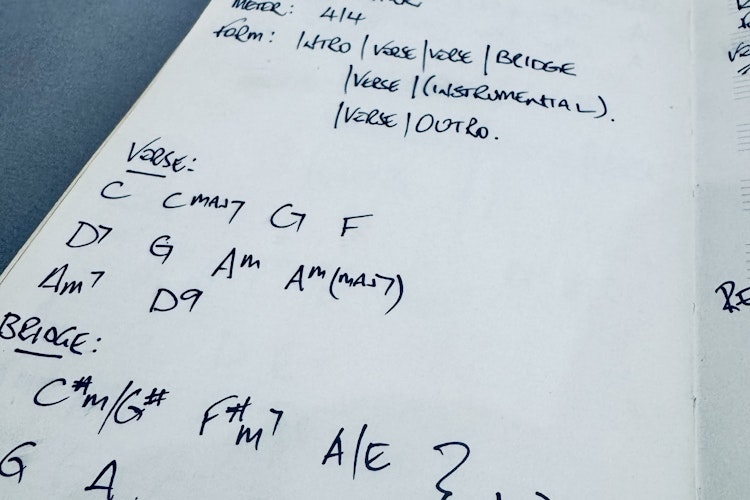A Minimalist Approach with Song Mapping, Chord Summaries, and Counting Measures
Learning a song doesn’t have to be overwhelming. By breaking it into manageable parts, focusing on the key elements, and following a structured, minimalist approach, you can get a song performance-ready in no time. In this post, I’ll guide you through mapping a song into sections, summarising the chord progressions, and introducing the importance of counting beats and measures—a crucial but often overlooked element in learning songs effectively.
Step 1: Listen Actively, Identify the Sections, and Feel the Pulse
Every song has a pulse or beat, which helps define its tempo and groove. As you listen actively to a new song, try to tap along to the pulse. This not only locks you into the tempo but also helps you understand how the song is divided into measures (bars). For example, many pop and rock songs use a 4/4 time signature, meaning there are four beats per measure.
While identifying the sections (Intro, Verse, Chorus, Bridge, etc.), count out the measures for each part. This will give you a clear idea of how long each section lasts and when transitions occur. A map might look like this:
- Intro: 4 measures
- Verse: 8 measures
- Chorus: 8 measures
- Bridge: 4 measures
Understanding the length of each section in measures will make it much easier to stay on track, even if you lose your place mid-song.
Step 2: SummariSe the Chord Progressions for Each Section
With your song sections mapped out, the next step is to summarise the chord progressions. Keep things simple. Your goal is to create a quick reference guide that lets you jump right into playing. Here's an example:
- Verse: G - D - Em - C (8 measures)
- Chorus: D - C - G - G (8 measures)
- Bridge: Em - C - G - D (4 measures)
Notice how each section not only has its own chord pattern but also varies slightly in length. Writing out the number of measures beside the progression helps you visualise how the chords fit within the structure.
Step 3: Recognise Patterns and Transitions
Most songs rely on repeating patterns. Maybe the chord progression in the verse is reused in the outro, or the chorus progression carries over to the bridge with slight changes. Recognising these patterns will save time and reduce the amount you need to memorise.
Pay extra attention to transitions between sections, as these are often the moments where things can go off track. If there’s a pause, key change, or tempo shift, make a quick note of it.
Step 4: Practice with a Focus on Tempo and Measures
Now that you have the structure and chords summarised, it’s time to practice each section individually. As you play, tap your foot or count the beats to stay locked into the tempo. Practice with a metronome if needed to maintain consistency.
For example:
- Verse: Tap "1-2-3-4" for each measure while playing G - D - Em - C.
- Chorus: Do the same with D - C - G - G, ensuring you stay in time for all 8 measures.
Practising with this rhythmic awareness will help you stay on track, even during long or repetitive sections.
Step 5: Create a Minimalist Reference Sheet
Put everything together on a one-page cheat sheet. This should include:
- The song structure (e.g., Intro, Verse, Chorus)
- Chord progressions for each section
- Number of measures per section
- Notes about transitions or tempo changes
This minimalist reference will become your go-to guide, helping you stay organised and ready to perform without unnecessary distractions.
Step 6: Play Through with Confidence
Once you’re comfortable with each section and can transition smoothly between them, play through the entire song. Use your knowledge of the song’s pulse and measures to keep a steady tempo and avoid getting lost.
With your structure mapped out, chord progressions summarised, and tempo in mind, you’ll be able to focus more on expression and feel during your performance.
Tempo and Structure are the Keys to Success
Learning a song quickly becomes much easier when you approach it systematically. By mapping out sections, summarising chord progressions, and counting beats and measures, you’ll gain a deeper understanding of the song’s structure and rhythm. This minimalist approach gives you a ready reference and helps you stay on top of your playing, even under pressure.
So next time you’re tackling a new tune, grab your instrument, tap the beat, and break it down step by step. You’ll be performing it confidently before you know it!
Happy playing, and remember: The pulse is your friend—stay in time, stay on track, and enjoy the music!



